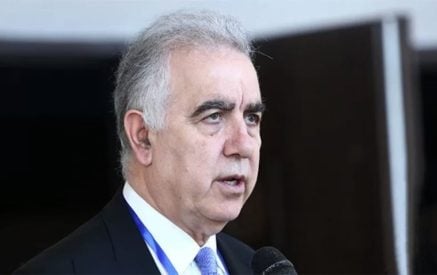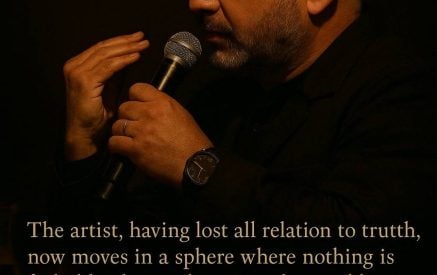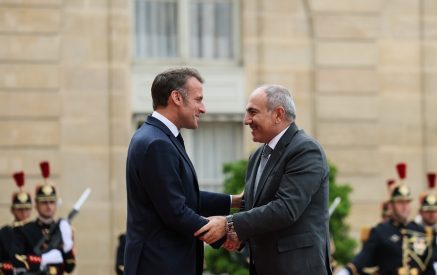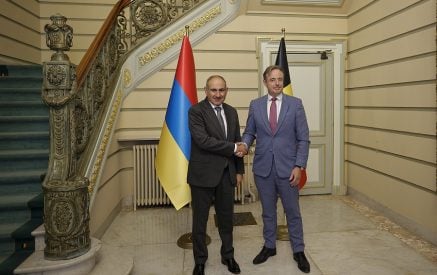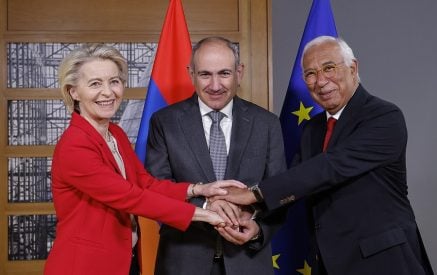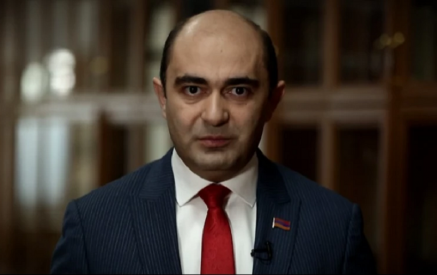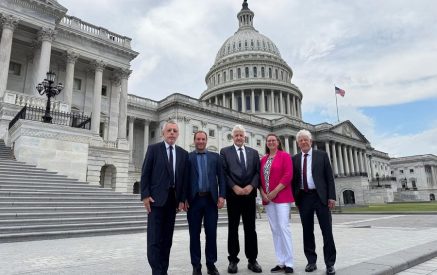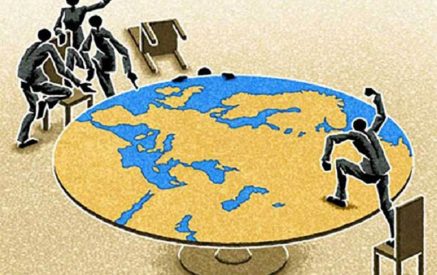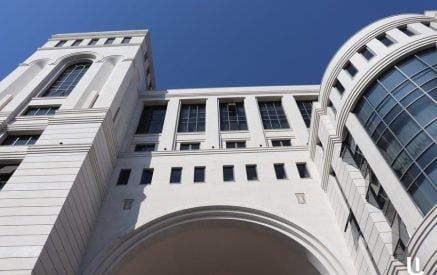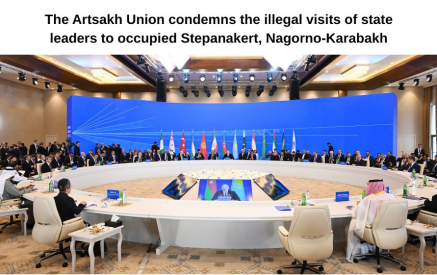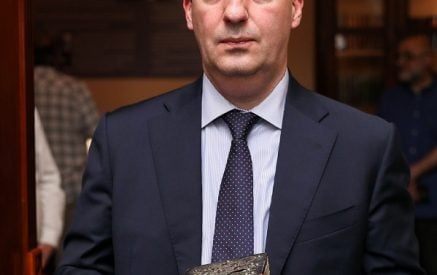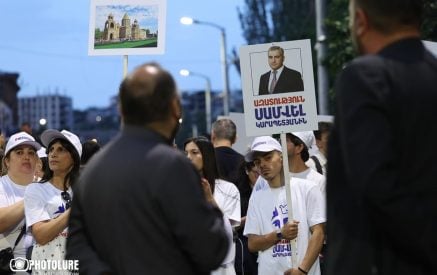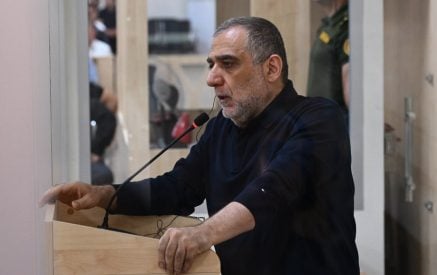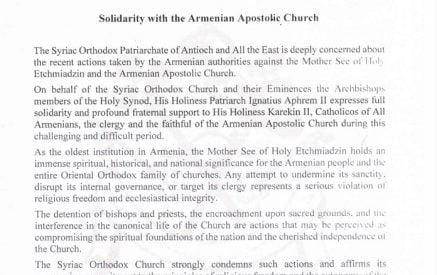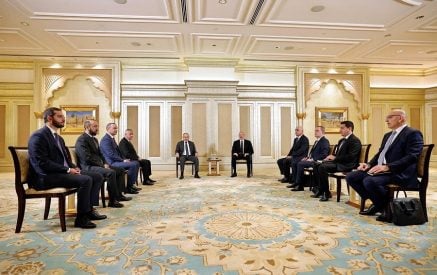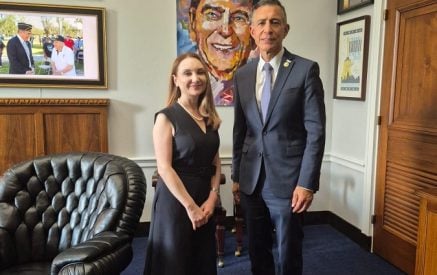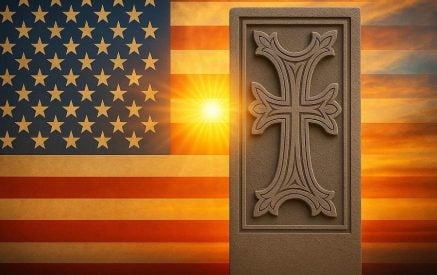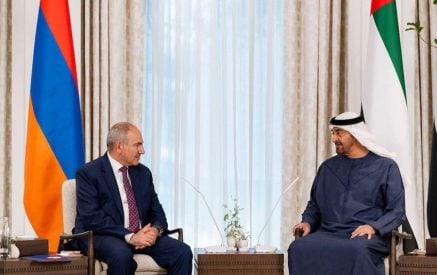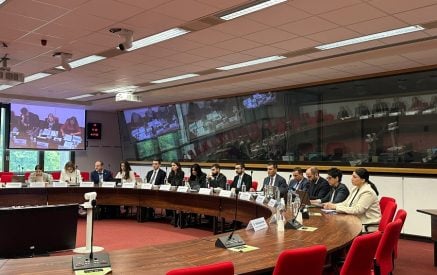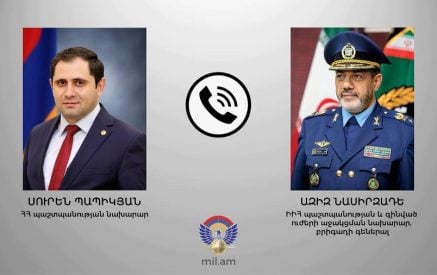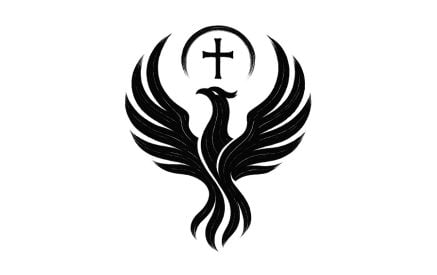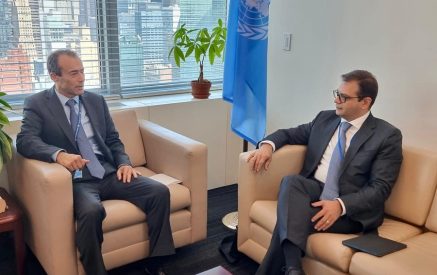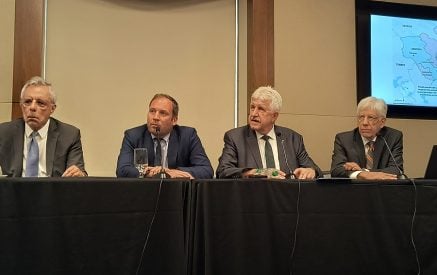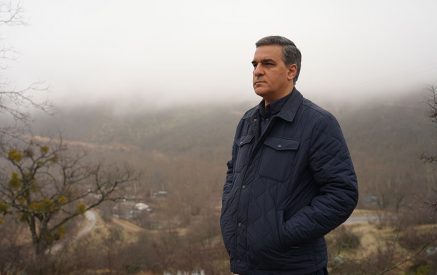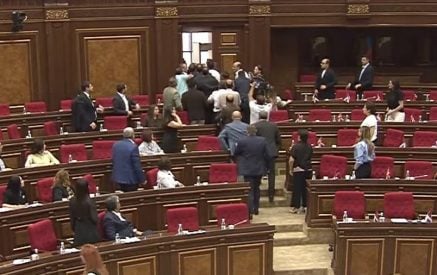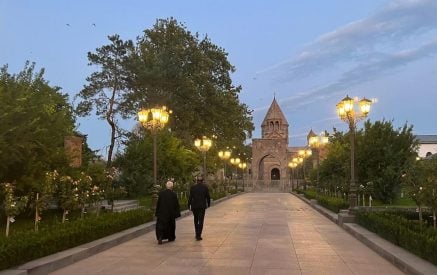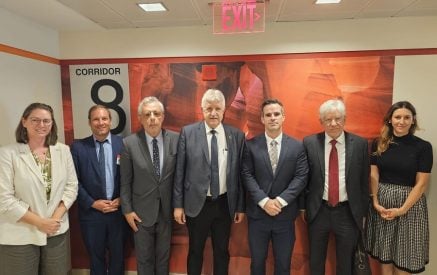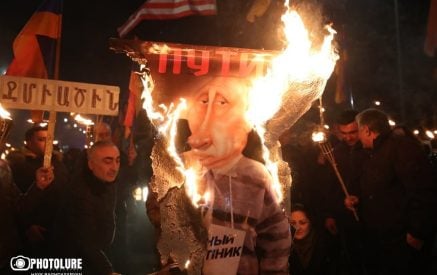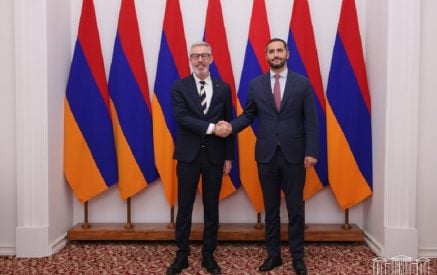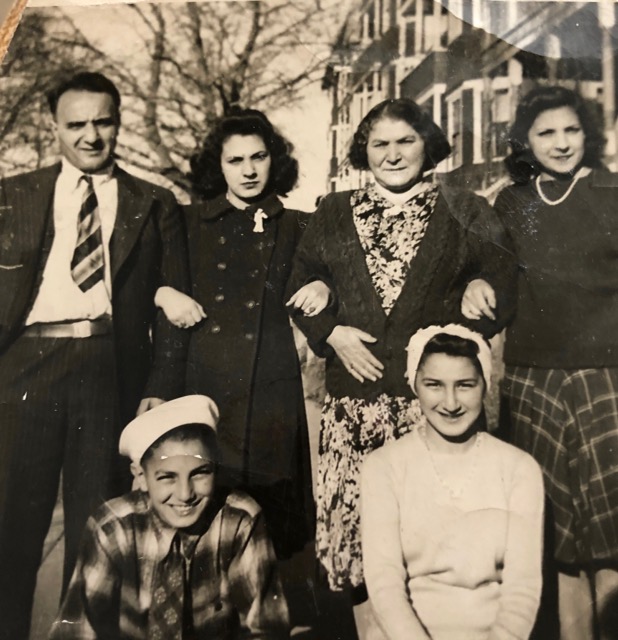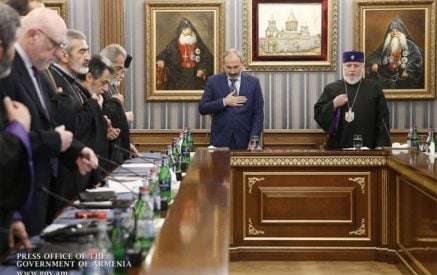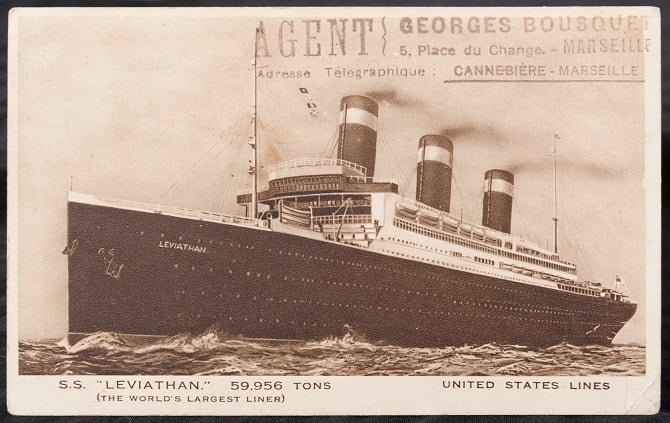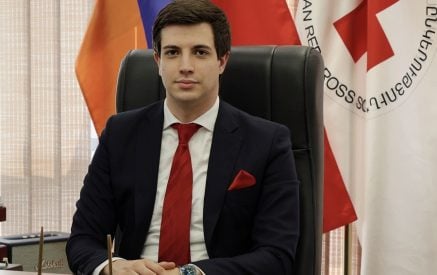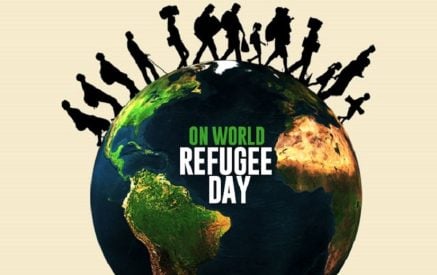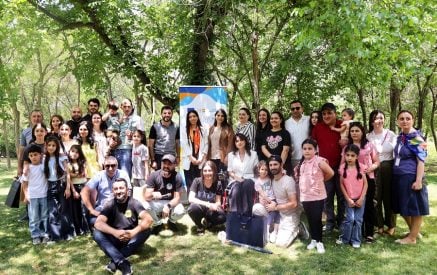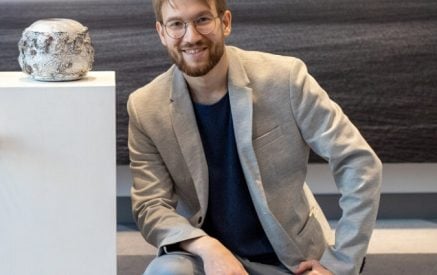My name is Helen, and I am the daughter of survivors of the Armenian Genocide. My mother Hripsome Alexanian was born in 1895 in the town of Marash, Turkey, and my father Sahag Sharigian was born in 1897 in the town next door, Sepastasia, a town now known as Sivas.
My mother Hripsime and my father Sahag had an arranged marriage by their families. My mother was 2 years older than my father. They were married around 1913, at the ages of 18 & 16, before the genocide began.
I remember my mother telling me that Sahag came by her house one day on a horse and said, “So… I am told we will be married!” My parents were married shortly after that in Sivas, Turkey. Life was good, and my parents had two twin boys Charles (Garabed) and Simon.
In 1915, Turkish soldiers came into the village of Sepastasia and suddenly took away my father, who was 18 years old. The Turks then chased my mother carrying her 2 year old boys to the nearby river. The Turks grabbed little Charlie & Simon away from my mother’s arms, and bayoneted them with swords right before my mother’s unbelieving eyes. They then threw little Charlie & Simon’s bodies in the river to drown.
Read also
The river was red with the blood from all the dead bodies in the water. This murder of my mother’s two babies was something my mother grieved until the day she died. She never got over that image. She would always say, “The Turks took my babies” and whimper & weep for them throughout her life. My mother screamed in anguish at the Turkish soldiers, “Why did you do this?” and “What have you done with my husband?” The Turkish soldiers told my mother, “There is a war going on, and your husband is going to fight in the war”. Hripsime never got to say good-bye to Sahag.., And they never were able to grieve together over the loss of their twin boys. My mother never heard from my father… not knowing if he was dead or alive.
Without her husband and babies, my mother Hripsime survived the next 2 years of the Armenian Genocide by being forced to be a housekeeper for a Turkish family. The family was cruel to her, and they told her there was a civil war going on between the Armenians and the Turks. When my mother told the family, “But why did the Turkish soldiers take and kill my babies?” the Turkish family denied this happened and didn’t believe her.
My mother somehow had to survive through the next several years with this Turkish family. She was given very little food, & sometimes had only grass and dirt to eat, She lived day to day, not knowing if her husband, parents and sisters were alive or dead… and with the terrible memory of her babies dying in the river where she had to gather water.
My mother told me that living in Turkey during the Genocide was an unspeakable life… & she saw horrible atrocities. My mother said she cried often and suffered greatly, but she persevered from day to day.
Then somehow… miraculously…. my father Sahag made it back to Sivas after in 1919. My parents were so happy & relieved to be reunited! They immediately made plans to leave, since it was not safe for any Armenian in Turkey. The Turkish soldiers were barbaric, and no one believed the stories of massacre & cruelty that survivors were telling. Armenians like my parents were witnesses to the Turks’ barbaric acts, and they feared for their safety.
Sahag and Hripsime somehow made their way to America through Marseilles, France. By the time my parents reached America, their faces showed signs of anguish and old age, even though they were both only in their mid 20’s. Sahag & Hripsime dreamed of reaching America, especially Worcester, Mass, where they’d heard other residents of Sepastasia had settled.
After landing on Ellis Island, my parents somehow got themselves to Sutton, Mass, & then to the safety of an apartment in Worcester. The house was next to The Church of Our Saviour, which was the first Armenian church in North America… where we all attended church, and my sister Rose later played the organ. My father Sahag got a job at the Worcester wire mill, and eventually saved enough money to buy a 2 family house on Eastern Ave, Worcester. My parents made a loving home for me and my siblings… 3 daughters, Rose, Mary, and Helen (me) and 2 sons, Charlie and Simon, who my parents named after their precious twins killed at the hands of the Turks.
Their oldest son Charlie was born in 1921, just 3 months after they landed in America on Ellis Island… and their youngest son Simon was born in 1930. My mother got great joy from her 5 children, yet grieved her whole life over her first 2 sons Charlie and Simon, and never forgot that terrible day in 1915, when her two boys were murdered at the hands of the Turks… It was the day when her life was forever changed.
Growing up, our family was as “poor as church mice”. My mother was a wonderful cook and baker, and we all loved and laughed as a family. But behind my parents smiles, there was always a sadness in their eyes from the traumas they experienced during the Genocide, and they both cried easily.
My siblings and I always longed for our grandparents and family members who we never knew, precious family who were killed at the hands of the Turks. When I was in grade school, I had to write a paper about my parents lives. I wrote the above story and my teacher chastised me & told me, “Helen, you have a very vivid imagination! None of this could have ever happened! “When I came home from school that day, I told my mother what my teacher said. She replied, “This is what they all say, but it’s true… and don’t you ever forget it.”
I have never forgotten it.
Share Your Stories
April is the month when the Armenian Museum of America, like so many other Armenian organizations and communities from around the world, commemorates the Armenian Genocide. In this, the 105th anniversary of the start of the Genocide, the Armenian Museum had planned to open an exhibition and program in remembrance of the victims of the Genocide, but with the restrictions surrounding COVID-19 we closed our Museum doors until we can safely welcome back visitors to our galleries. To still remember the victims, we decided to take a different approach this year by reaching out to our members, supporters and the Armenian community at-large to invite you to share stories and photos of family who survived the Genocide and/or contributed to the many relief aid groups that assisted the survivors. These stories of triumph, survival and strength will not only allow us to remember the struggles and challenges they endured but will also show those of us now going through difficult times that there is hope and promise in the days ahead. With your permission, the Museum will then post these stories and photos throughout the month of April on our Facebook page and on the Museum’s website: armenianmusem.org. Visit the site and click on the banner to share your story.
Coming to America
Helen Takessian’s grandfather, Krikor Melkonyan, was a very wealthy merchant in Constantinople. He was among the first Armenians arrested at the onset of the Armenian Genocide. Helen’s mother, about 5 years old at the time, smuggled messages and money in her hair to her father in prison. Krikor was able then to bribe an officer or judge and have him placed under house arrest instead, where he was able to escape after 2 years trapped at home. After World War I, Helen’s mother’s family moved to Paris, France and ultimately to Milwaukee, WI.
The postcard depicts the ship, S.S. Leviathan, on which they travelled to the United States. One of the largest of the time and used by many immigrants, the Leviathan started its life as a German steam liner. In 1917 it was seized by the U.S. Navy. After several years in naval service, the ship was decommissioned and became a low-cost luxury liner.
Gift of Helen Takessian
About the Armenian Museum of America
The Armenian Museum of America houses and preserves objects of art and culture collected from Armenian families and donors from around the world. The Museum holds its collection in trust for future generations as objects of witness and survival to serve as a record of Armenian creativity, ingenuity, and wisdom for those who are familiar with Armenian history and culture, as well as for those to whom these objects, manuscripts, and ephemera are a new experience.
Armenian Museum of America
Main caption: The Sharigian Family the day their oldest son Charlie left to serve in WW II


